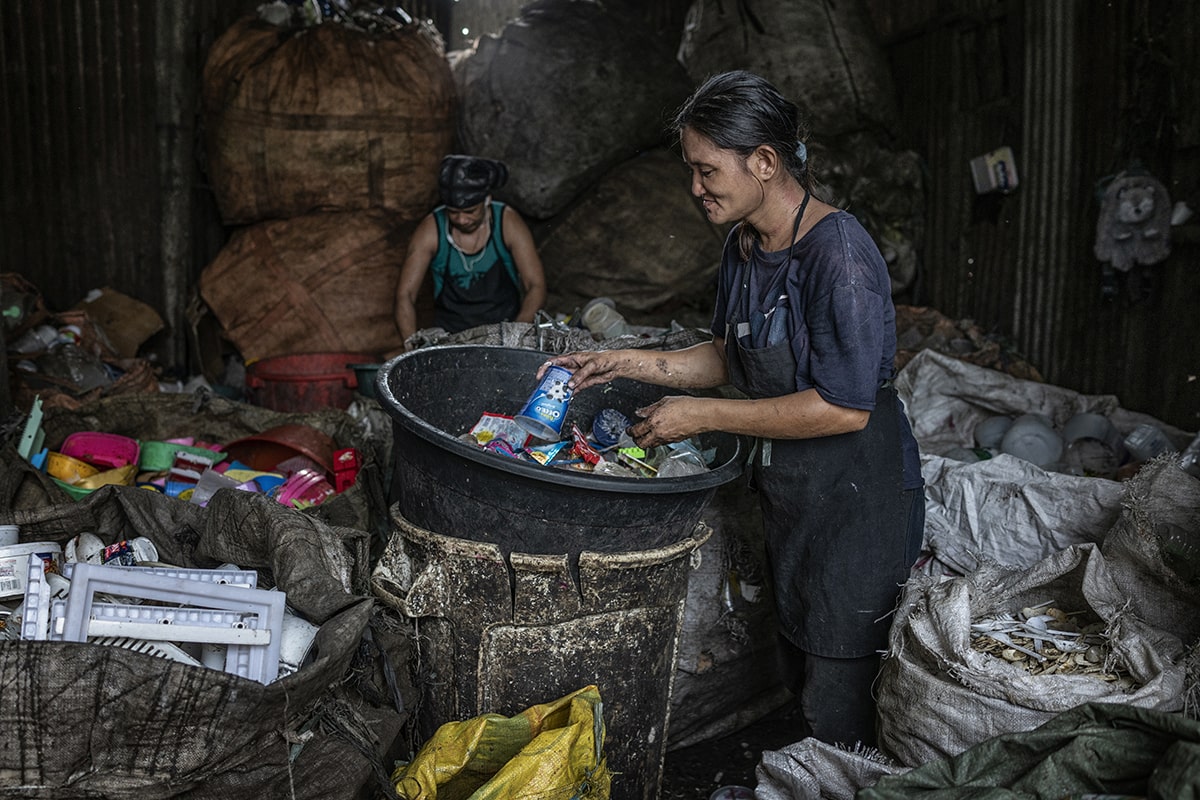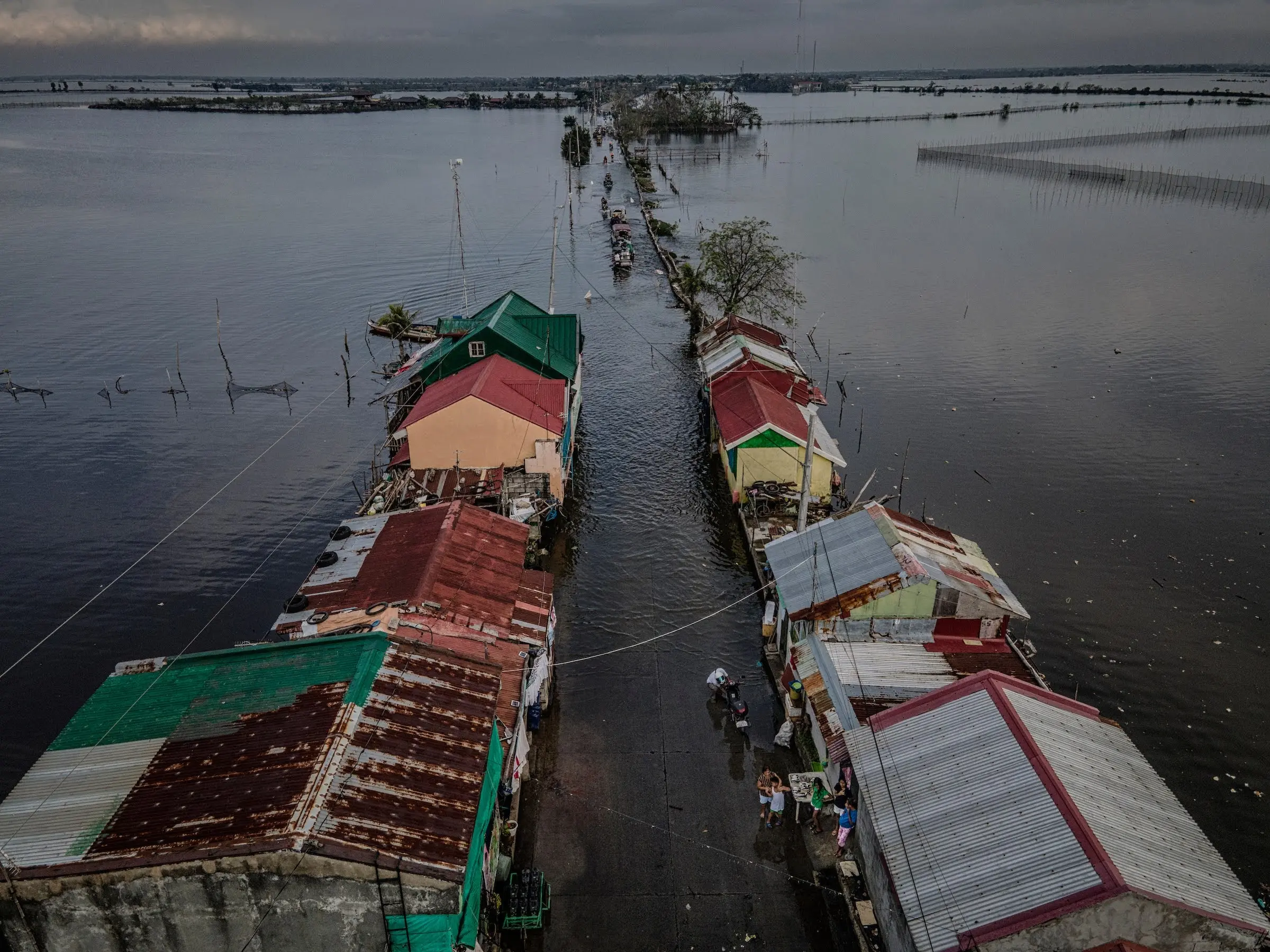
Groundwater pumping in the Philippines is causing coastal land to sink while the razing of mangrove forests has left the area vulnerable to bigger storm surges from the rising seas.
Manila is one of the most vulnerable cities in the world to sea level rise driven by climate change. But less than 10 miles north of the capital city of the Philippines, coastal communities are sinking even faster than the seas are rising because of a declining water table rather than rising seas.
“What is being projected 50 years from now or 100 years from now for many parts of the globe is actually happening right now at even faster rates,” in low-lying areas in Bulacan Province, Fernando P. Sirinagan, director of the University of the Philippines Marine Science Institute, told Reuters.
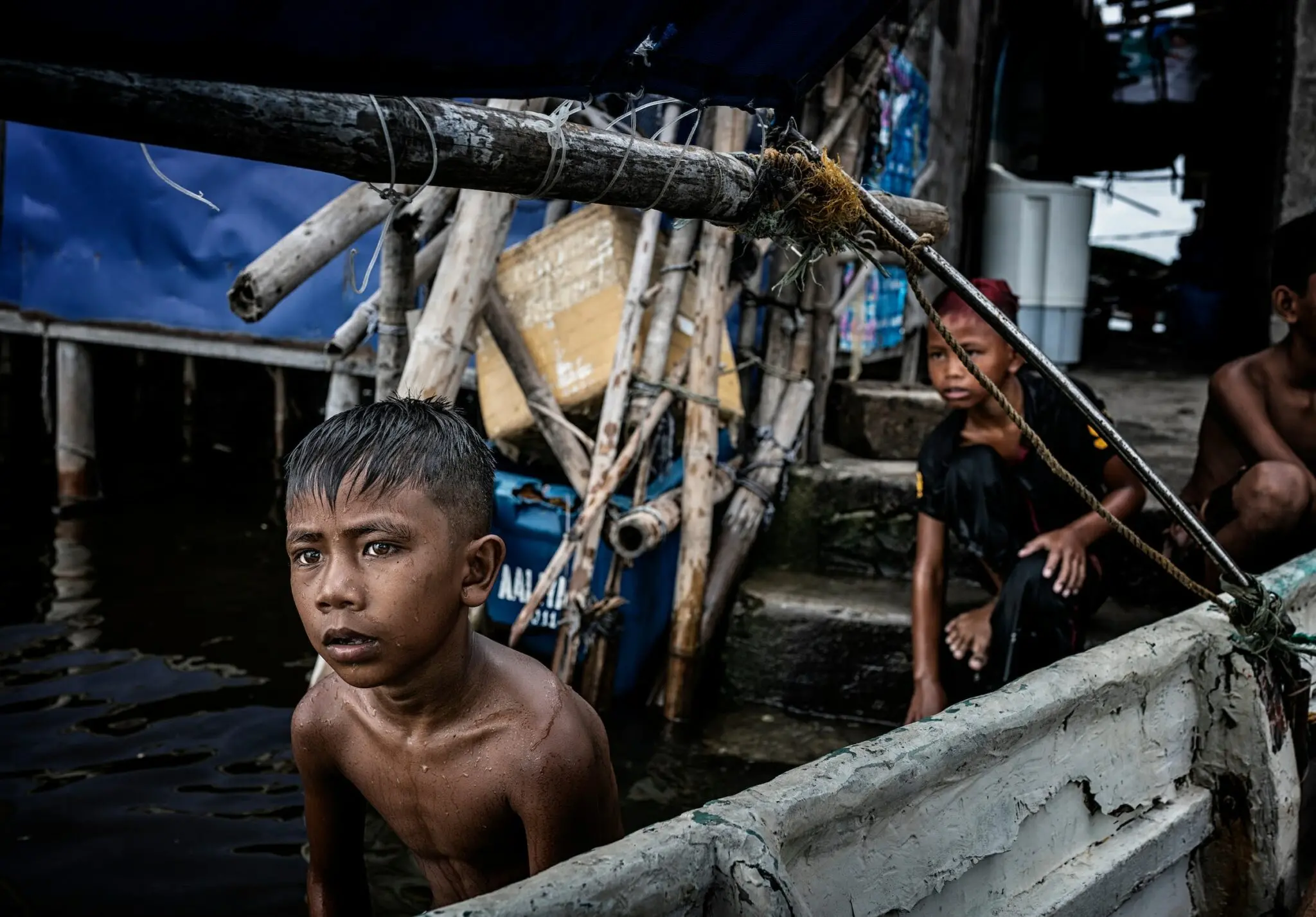
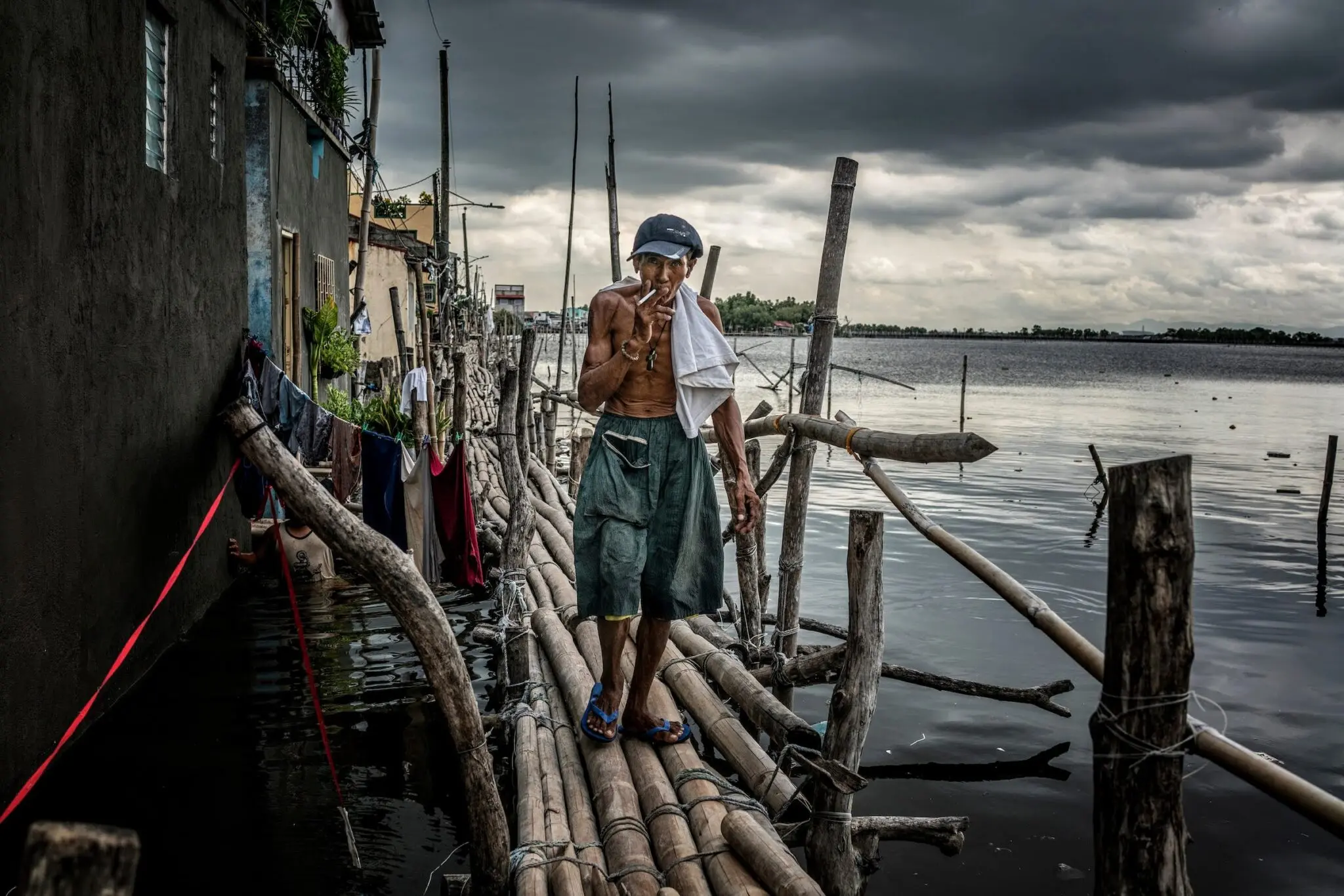
Satellite monitoring has revealed that Bulacan and neighboring Pampanga Provinces have sunk by between 1 1/2 to 2 1/2 inches (4 to 6 centimeters) since 2003 as clay beneath the provinces’ soils has compressed and stuck together when water is drawn out through wells.
As that land sinks, climate change is melting ice sheets covering Antarctica and Greenland, and raising sea levels around the world. The U.N. estimates the global average sea level rise of 0.11 inches (3 millimeters) every year compounds the effect of land subsiding in a region that is hit by, on average, 20 typhoons annually. High tide flooding is now a daily occurrence and the region is increasingly vulnerable to bigger storm surges that can travel farther inland.
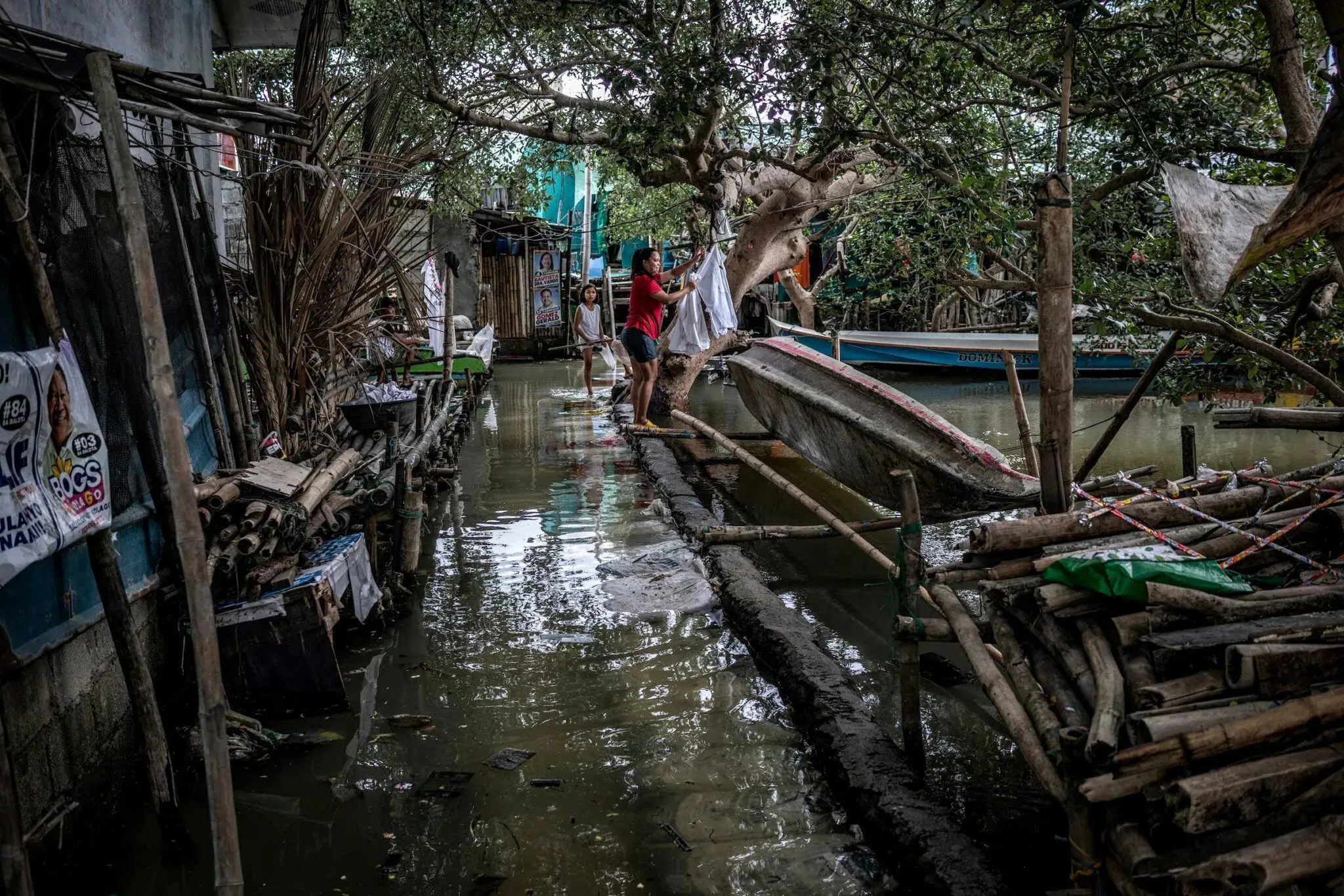
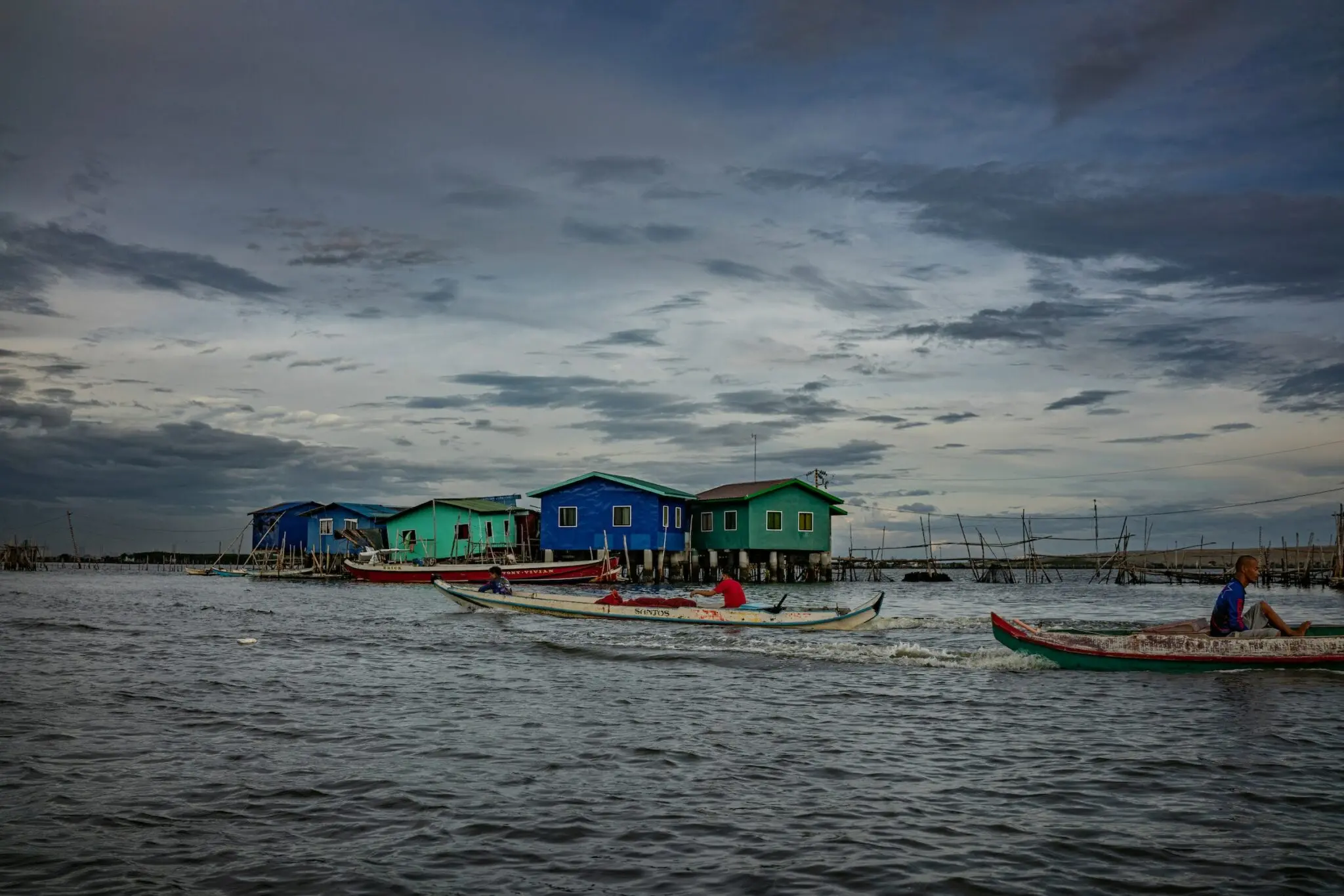
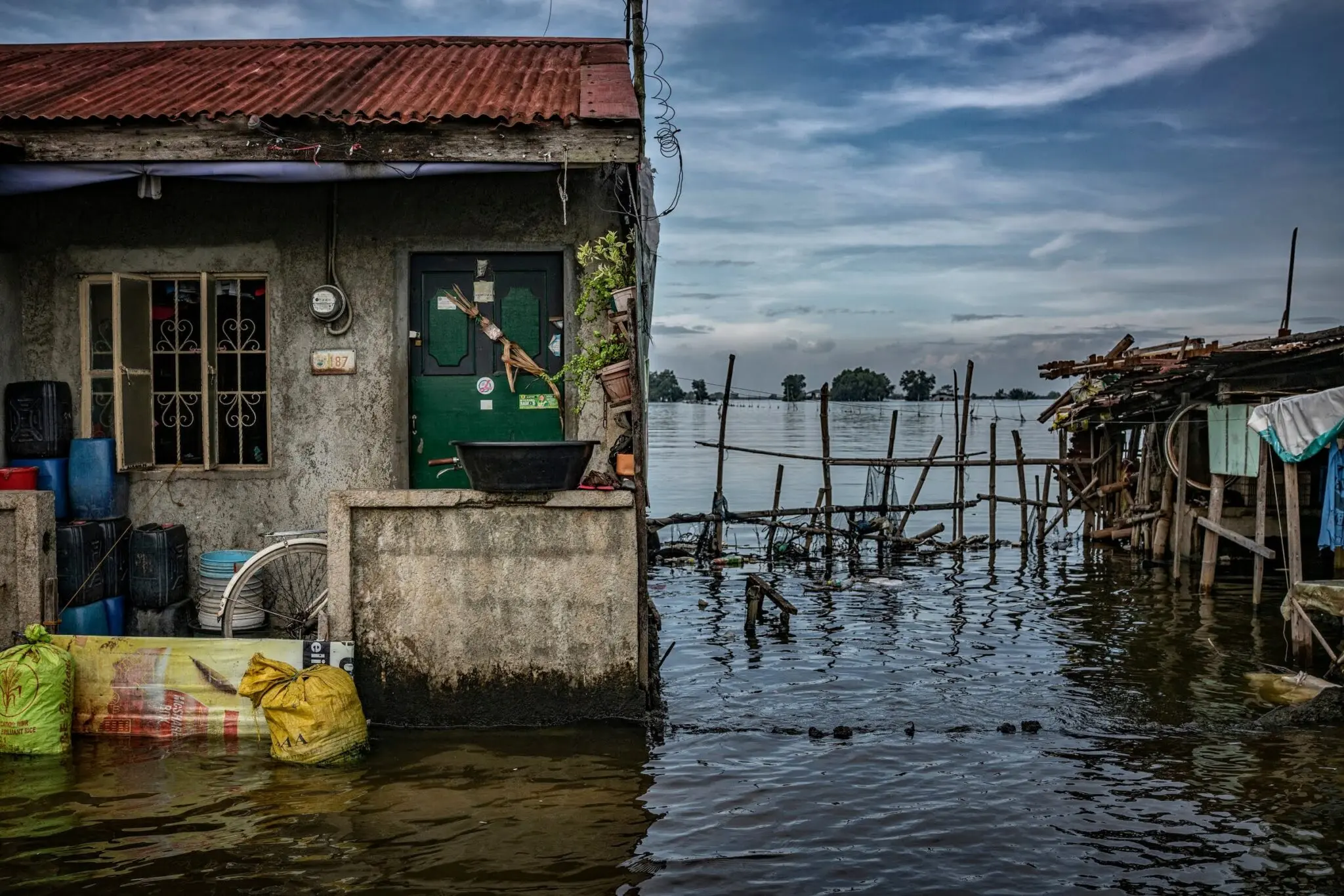
The Department of Natural Resources (DENR) identifies 133,400 acres of mangrove forests that fringed Manila Bay at the end of the 19th century. By the early 1990s there were just 4,900 acres of those mangroves left. By 1995, urban expansion and a complex matrix of fish ponds had shrunk the coast-sheltering forests to just 1,962 acres. The sprawling mangrove forests held vulnerable coastal soils in place, broke waves and buffered the shore from storms and provided habitats or thousands of species. But today, fewer than 1,236 acres of mangrove forests remain, leaving this low-lying coastline of Manila Bay, one of the most vulnerable to typhoon storm surges and tides on the planet. All that remains of most of the mangrove forest is a labyrinth of channels—former rivers—winding through geometric fish ponds.
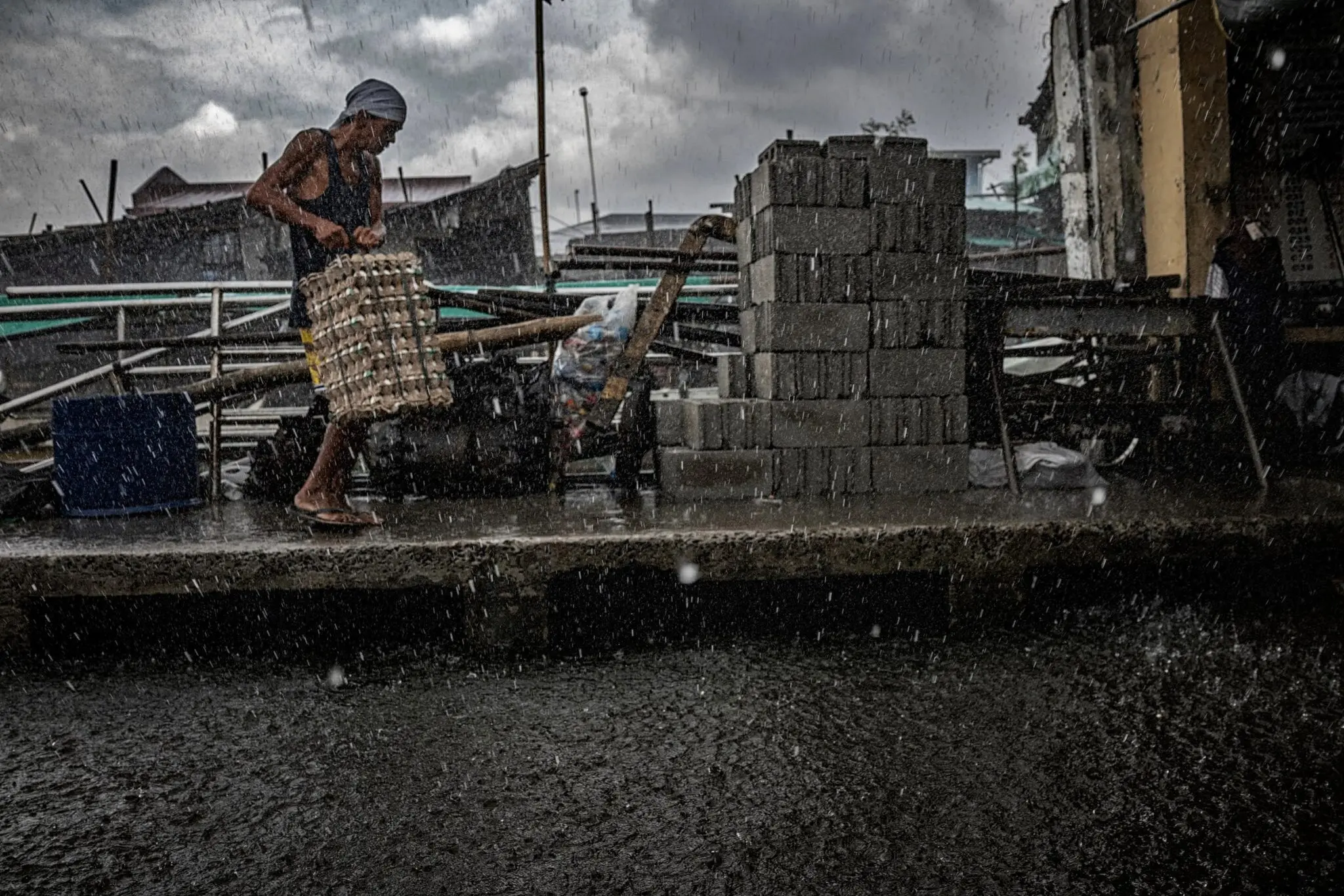
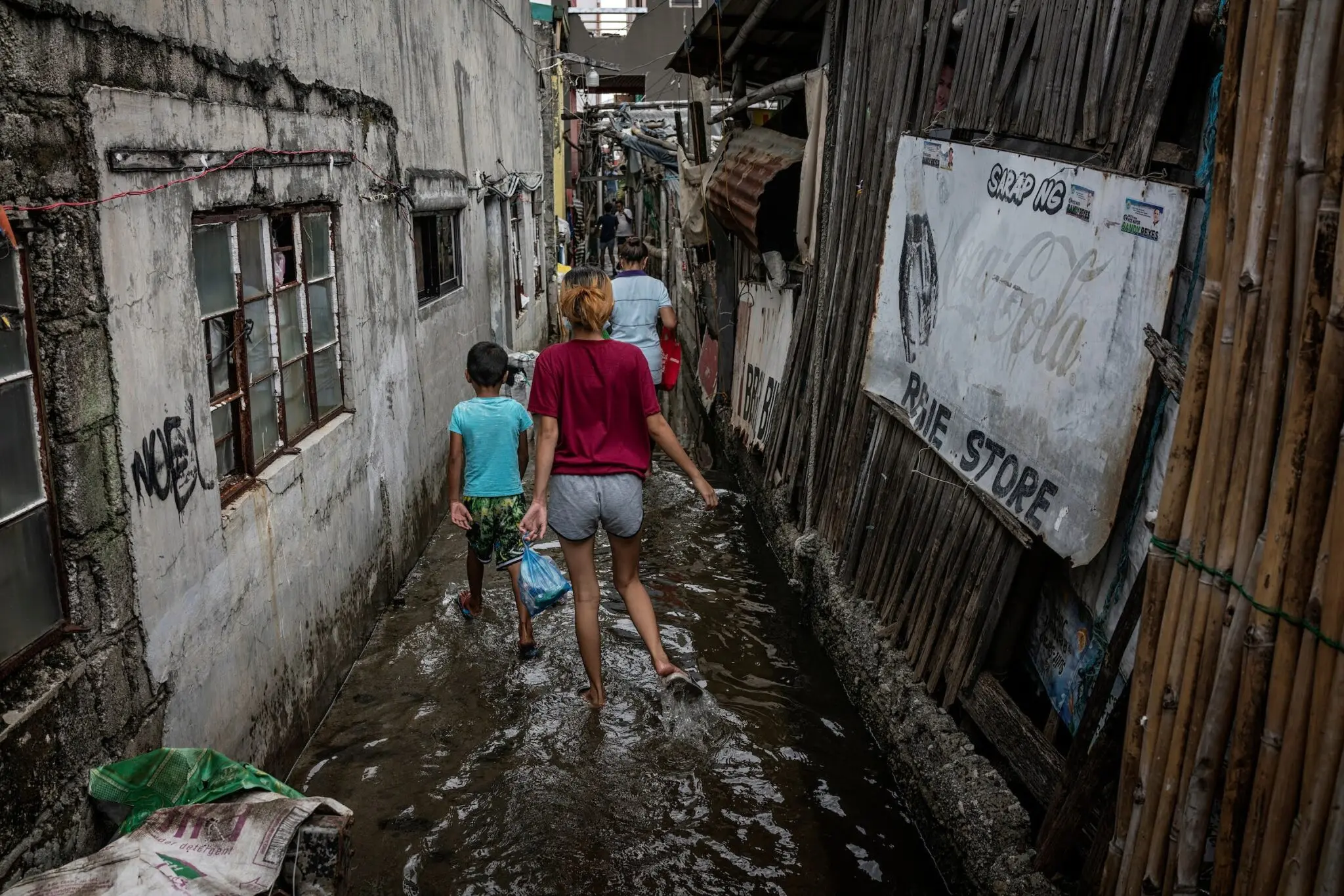
When flooding became an existential threat, the Philippines’ Department of Public Works and Highways built a sinuous seawall that traced the Manila Bay coastline from the Metro Manila border to the Meycauayan River in Bulacan Province, as part of the Manila Bay Integrated Flood Control, Coastal Defense & Expressway Project. Still, there are enough gaps in the seawall that some communities behind it are flooded with every single high tide.
Then there are the communities that are not protected by the seawall.
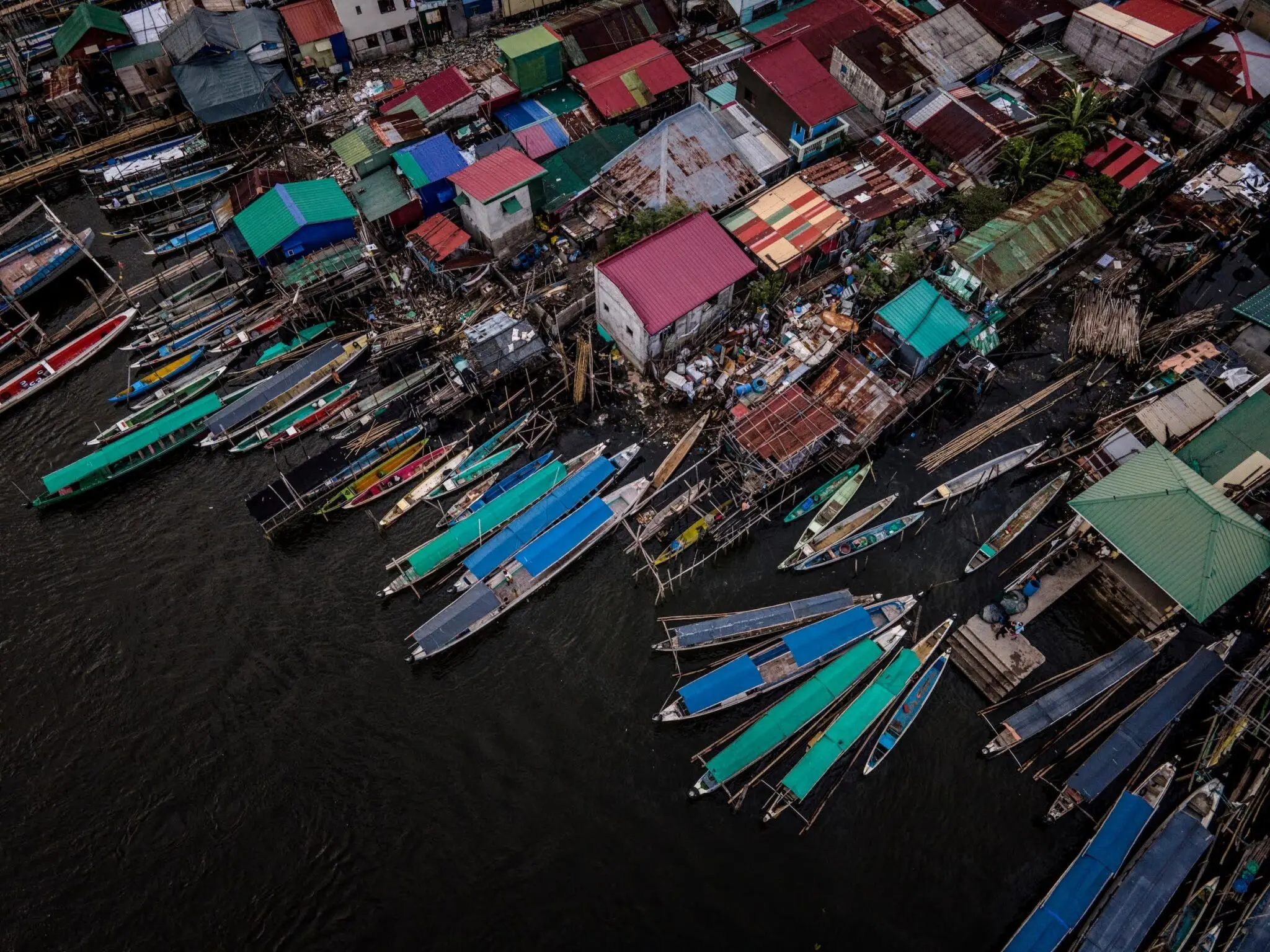
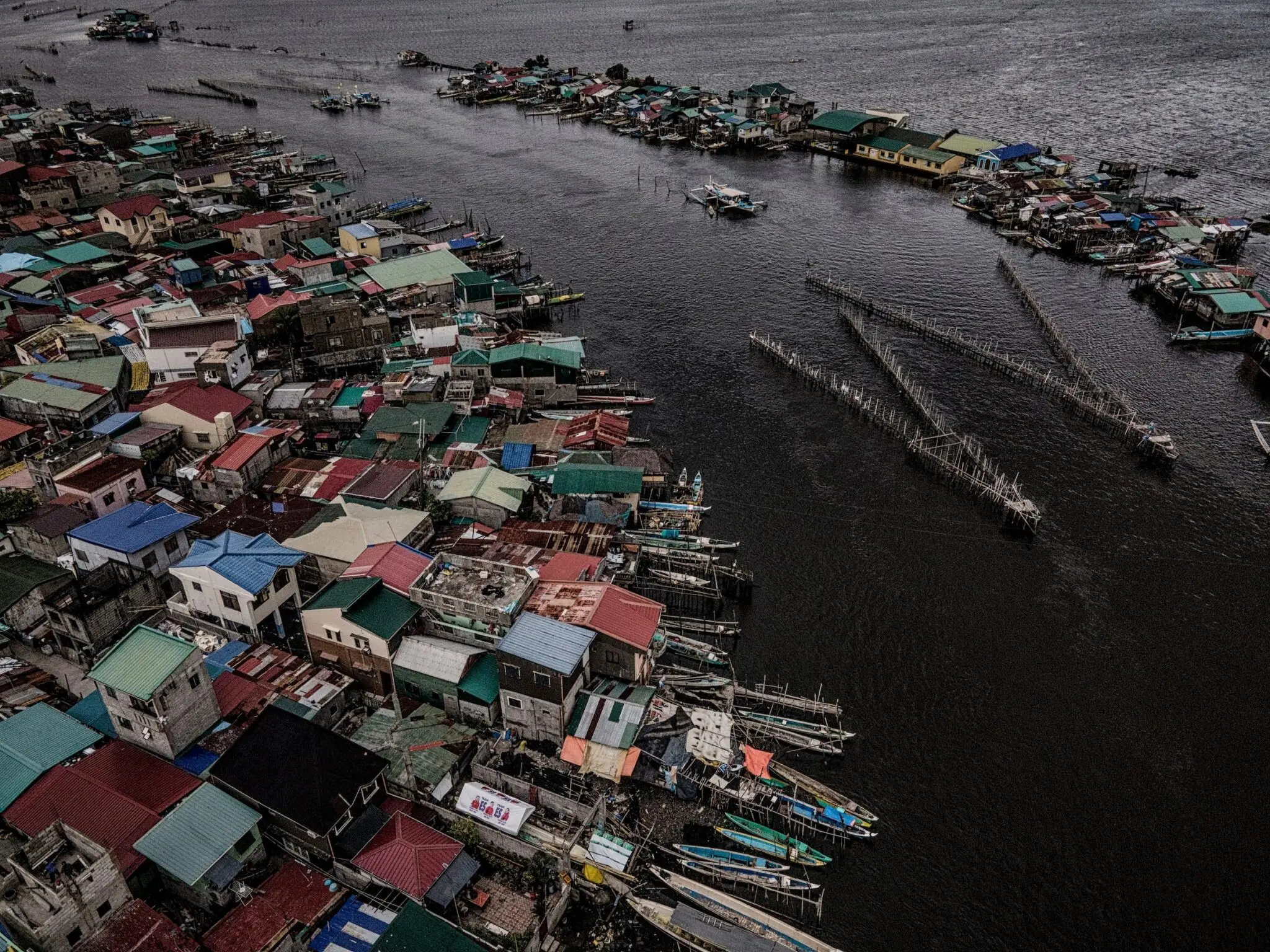
Almost every speck of land on densely-packed Binuangan and Salambao Islands, which sit side-by-side, are covered by some kind of structure, or a stored boat. Set outside the seawall, these islands are completely exposed to whatever the ocean brings, and during high tides, very little of their land sits above the water line.
Almost all of the older homes on Binuangan Island are already uninhabitable and inundated with seawater, regardless of the level of the tide. Newer homes are built on raised land or on posts.
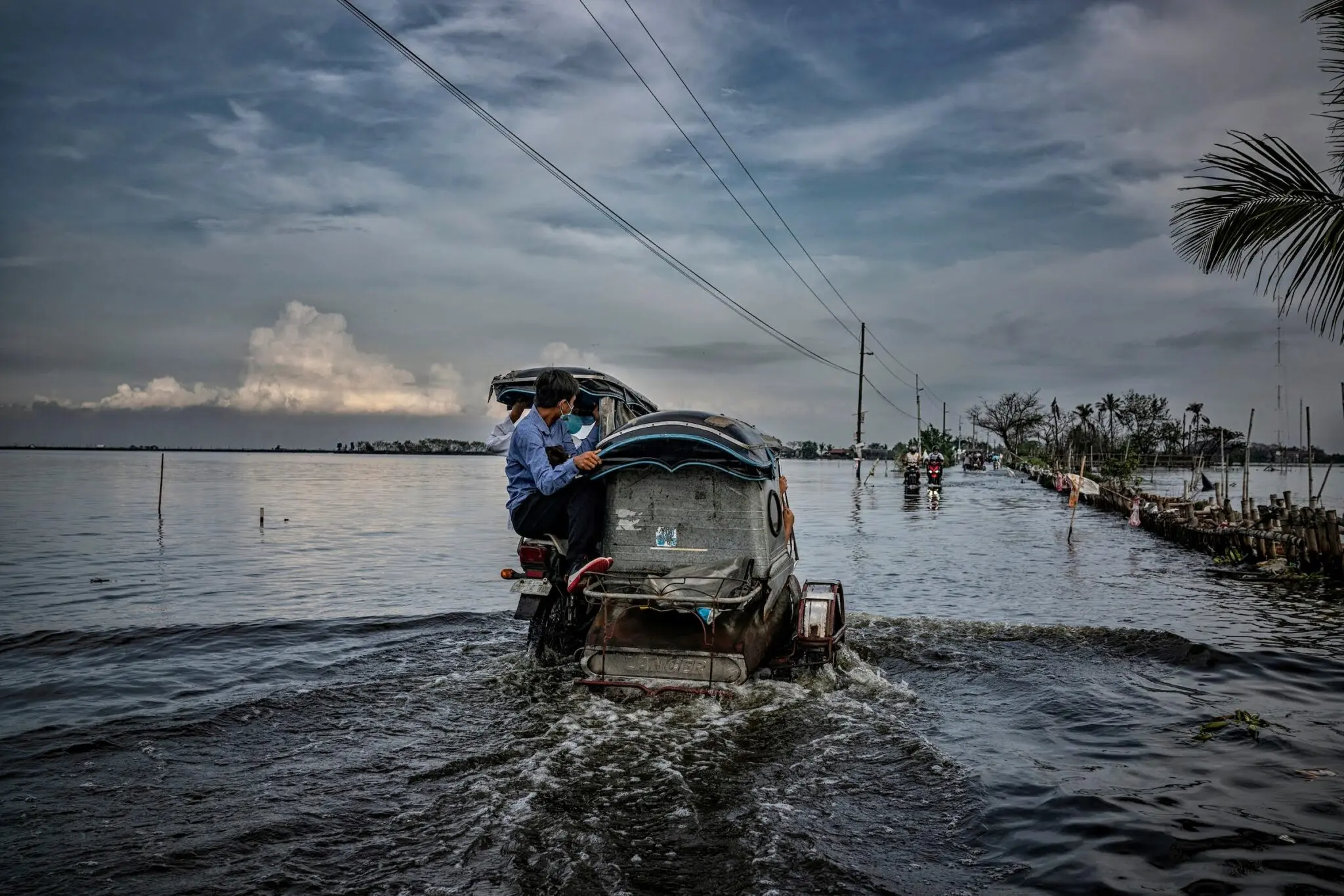
Back on Bulakan, a cottage industry has popped up for tricycles—motorcycles with sidecars—to ferry people over flooded portions of Bagumbayan Street during high tides to dry stretches of the roadway.
But the high tides will soon be too deep for the motorcycles, and it is an open question how long residents can keep their homes and livelihoods above water.


